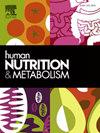Latest trends on interplay of autophagy, adipose tissue, and gut microbiota in obesity-related metabolic disorders
IF 1.8
Q3 ENDOCRINOLOGY & METABOLISM
引用次数: 0
Abstract
Purpose of review
This review aims to synthesize current research on the intricate relationships among visceral obesity (VO), autophagy (Atg), gut microbiota, and adipose tissue dysfunction, all of which contribute significantly to insulin resistance (IR) and associated metabolic disorders. Specifically, it seeks to identify key mechanistic pathways and potential therapeutic targets.
Findings
Contemporary investigations have established VO as a principal etiological factor in diabetes, non-alcoholic fatty liver disease (NAFLD), and cardiovascular disease (CVD), accounting for a substantial proportion of global metabolic disease incidence. Notable discoveries include: (1) the nuanced role of Atg in adipose tissue homeostasis, wherein tissue-specific aberrations, such as diminished ATG5 expression in visceral adipose tissue, exacerbate IR. Conversely, pharmacologically induced Atg, exemplified by rapamycin administration, enhances insulin sensitivity by 15–25 % in rodent models. (2) Alterations in gut microbial composition, characterized by a 40 % decrease in Bacteroidetes and an increase in Firmicutes, correlate with elevated visceral adiposity and systemic inflammation. Fecal microbiota transplantation in human studies has demonstrated restoration of microbial diversity, resulting in a 12 % reduction in hepatic steatosis in NAFLD patients; (3) adipose tissue macrophages exhibit a pro-inflammatory phenotype, evidenced by a 2-3-fold elevation in TNF-α levels in VO, which precipitates metabolic dysfunction through Toll-like receptor 4 and nuclear factor kappa B signaling pathways.
Conclusion
The interactive network involving Atg, gut microbiota, and adipose tissue represents a pivotal axis in the development of metabolic diseases. While interventions targeting Atg and microbiota modulation demonstrate potential, inconsistent outcomes, such as the variable efficacy of probiotic therapies, underscore the context-dependent nature of these mechanisms. Existing therapeutic approaches, including lifestyle modifications, pharmacological interventions, and bariatric surgery, address adiposity but require more targeted approaches. Future research should prioritize elucidating tissue-specific Atg regulation and developing personalized microbiota-based therapies to manage the complex pathophysiology of obesity-related disorders effectively.
自噬、脂肪组织和肠道微生物群在肥胖相关代谢紊乱中相互作用的最新趋势
本文综述了内脏性肥胖(VO)、自噬(Atg)、肠道微生物群和脂肪组织功能障碍等与胰岛素抵抗(IR)及相关代谢紊乱之间复杂关系的研究进展。具体来说,它寻求确定关键的机制途径和潜在的治疗靶点。目前的研究已经确定VO是糖尿病、非酒精性脂肪性肝病(NAFLD)和心血管疾病(CVD)的主要病因,占全球代谢性疾病发病率的很大比例。值得注意的发现包括:(1)Atg在脂肪组织稳态中的微妙作用,其中组织特异性畸变,如内脏脂肪组织中ATG5表达减少,会加剧IR。相反,在啮齿类动物模型中,药物诱导的Atg(例如雷帕霉素)可使胰岛素敏感性提高15 - 25%。(2)肠道微生物组成的改变,以拟杆菌门减少40%和厚壁菌门增加为特征,与内脏脂肪升高和全身性炎症相关。在人体研究中,粪便微生物群移植已经证明了微生物多样性的恢复,导致NAFLD患者肝脂肪变性减少12%;(3)脂肪组织巨噬细胞表现出促炎表型,VO中TNF-α水平升高2-3倍,通过toll样受体4和核因子κ B信号通路导致代谢功能障碍。结论Atg、肠道微生物群和脂肪组织之间的相互作用网络是代谢性疾病发生的关键轴。虽然针对Atg和微生物群调节的干预措施显示出潜力,但不一致的结果,如益生菌治疗的不同疗效,强调了这些机制的环境依赖性。现有的治疗方法,包括改变生活方式、药物干预和减肥手术,都可以解决肥胖问题,但需要更有针对性的方法。未来的研究应优先阐明组织特异性Atg调节和开发个性化的基于微生物群的治疗方法,以有效地管理肥胖相关疾病的复杂病理生理。
本文章由计算机程序翻译,如有差异,请以英文原文为准。
求助全文
约1分钟内获得全文
求助全文
来源期刊

Human Nutrition and Metabolism
Agricultural and Biological Sciences-Food Science
CiteScore
1.50
自引率
0.00%
发文量
30
审稿时长
188 days
 求助内容:
求助内容: 应助结果提醒方式:
应助结果提醒方式:


